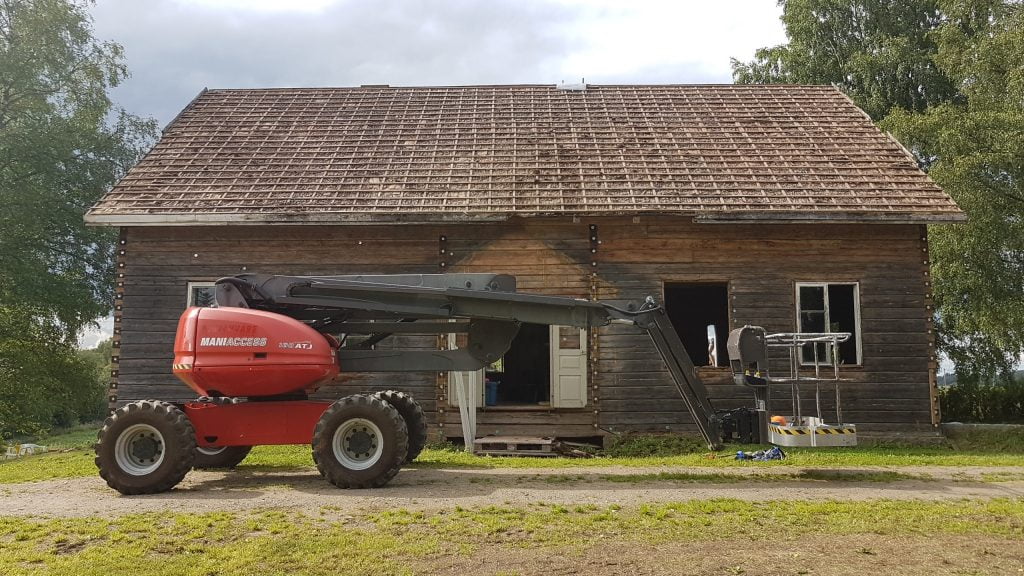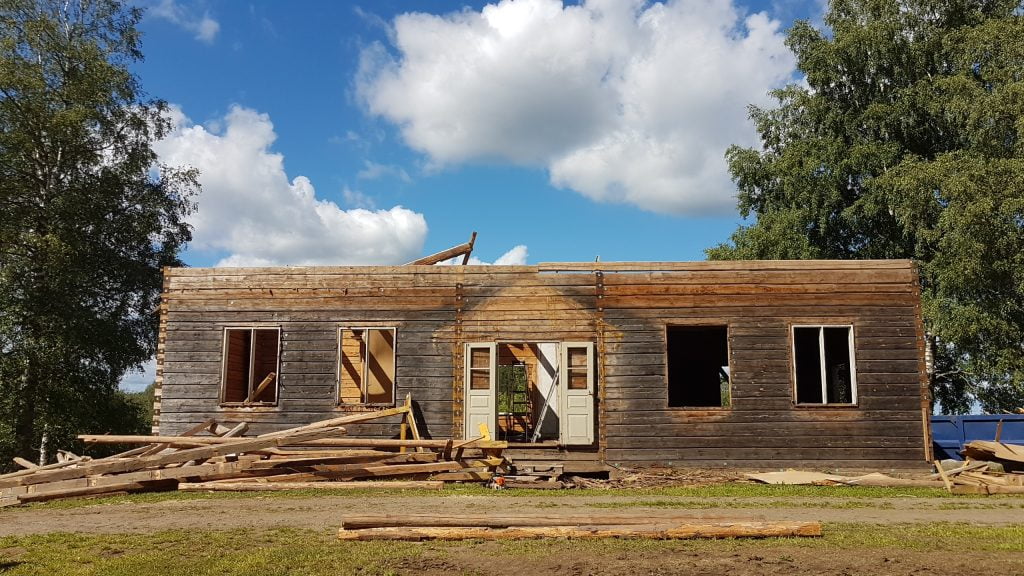Log construction – a centuries old circular economy
Over the centuries, many log buildings have been dismantled, moved, and reerected at their new locations. There is good reason to view log construction as a pioneer of the circular economy.
Text: Inkariina Sipiläinen
Photographs: Timo Ovaskainen
Read the article in Finnish: Hirsirakentaminen – kiertotaloutta vuosisatojen takaa

According to the Ministry of the Environment, about a third of greenhouse gas emissions in Finland comes from construction and buildings. This means reducing emissions in the construction sector is important if Finland is to reach internationally set climate targets.
It has already been established that energy efficiency regulations are already as tight as they can be for new construction, and tightening the noose any further will not successfully reduce this carbon footprint. Instead, the focus is now veering towards the carbon footprint of building materials manufacturing and the possibilities offered by recycling building material. Scarce resources will create a future where materials will need to be used more effectively.
When it comes to building materials, logs in particular have followed circular economy principles for hundreds of years.
– Log buildings have been dismantled and then put up elsewhere throughout time. Log building parts were also recycled, sometimes several times over. Is there any other material that can do this? asks Seppo Romppainen, CEO at the Finnish Log House Industry Association.
– Logs are a simple building material that also binds carbon throughout its lifecycle. Trees store carbon when they grow, and then don’t release it back into the atmosphere until the end of their life – if even then! Thanks to modern technology, it is now commercially viable to turn logs into biochar once they reach the end of their lifecycle. This means that about half of the carbon dioxide sequestered by trees as they grow can be stored in the ground as a soil amendment for thousands of years, says Romppainen.
Reuse is the circular economy at its best: when materials are reused as they are, there are no new production emissions. For reused logs, this means an even lower carbon footprint.
– Today’s manufacturing techniques allow new log houses without additional insulation to be easier to dismantle and reassemble than log houses made 100 years ago, says Romppainen.

Finland’s oldest log buildings are over 500 years old
To the best of anyone’s knowledge, the oldest log build still standing in Finland is St. Henry’s Chapel in Kokemäki. Research has shown that the oldest logs in this building are from the 1470s. Similarly, log buildings put up today can still be standing 500 years from now.
The history of construction in Finland largely revolves around log construction, with many log buildings having been moved and reused across Finland.
– The demand for reused log buildings would be quite high, but the limiting factor is the availability of good frames. Doors, windows, floorboards and roof structures are often included in moves, says restoration master Lauri Saarinen from Livady Architects.
Saarinen notes that the roof beams of medieval stone churches are the best location to find the oldest logs still in use today. The upper part of one end of St. Mary’s Church in Sastamala is one example, as it uses recycled logs dated to the 15th century.
– Sustainable development calls for reusing old buildings as much as possible. As long as log houses are in relatively decent shape, people can repair them and recycle almost everything.
Saarinen notes that energy efficiency regulations are a challenge for reuse. When buildings are relocated to new locations, building inspectors often regard them as new construction projects, rather than as renovated legacy sites. Unfortunately, such old buildings seldom meet today’s regulations, particularly those on acoustics and energy efficiency.
Modern log buildings are easier to move

Located in Pudasjärvi, Kontio Log Houses is the world’s largest manufacturer of log buildings. Hanna Haipus, B2B Business Director at Kontio, points out that current calculation methods don’t count logs as recyclable material even though logs have been recycled for ages.
– Nonetheless, we already have a super product for the circular economy on our hands, Haipus says.
Luckily, the near future will bring changes in how we calculate carbon footprints, which will improve the position of logs in calculations.
– Log buildings are made of renewable material, which in itself is an argument in favour of logs. For us, it is important to use raw materials efficiently as we do not want to waste any of this precious material. Manufacturing logs takes very little energy compared with steel for example, which also reduces the total carbon footprint.
